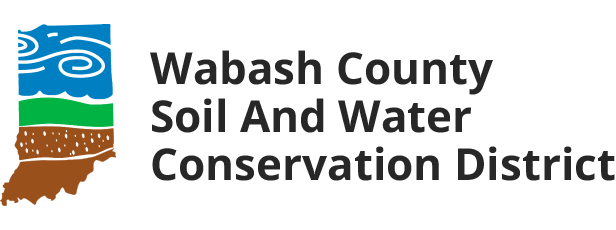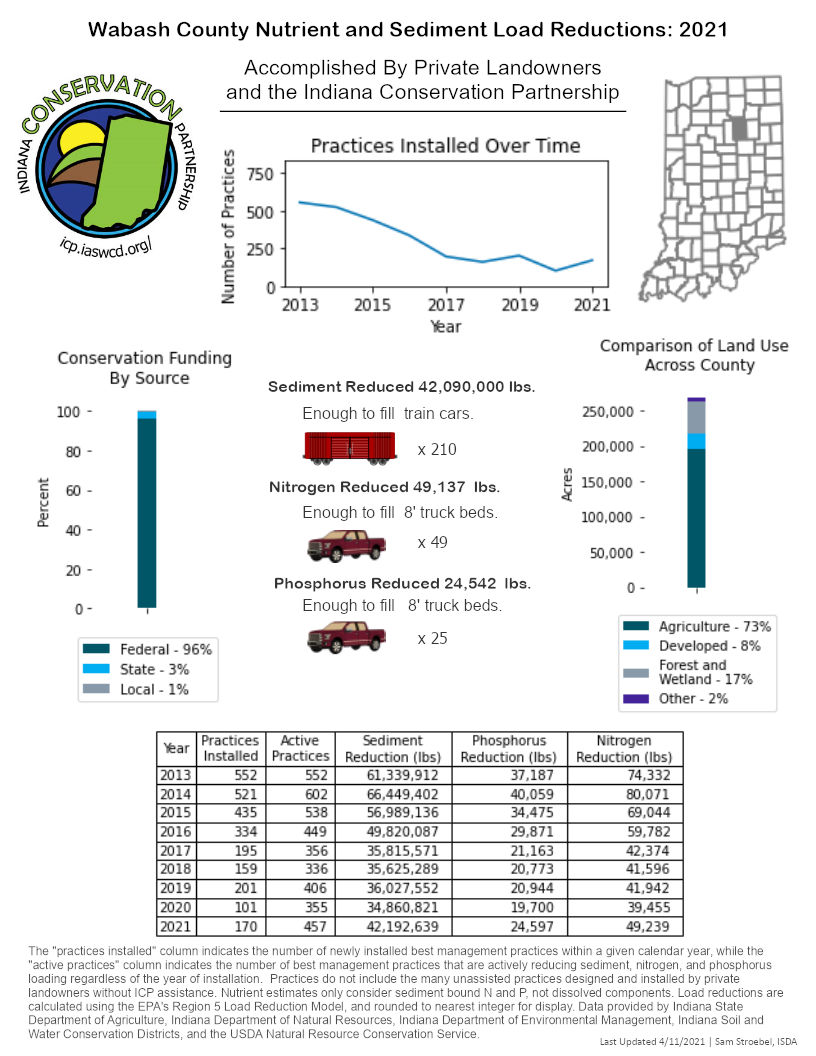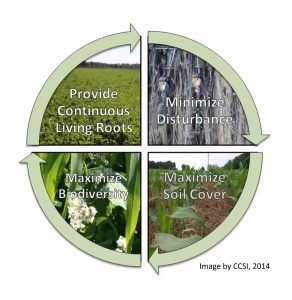Our Mission in Conservation
The mission of the Wabash County Soil and Water Conservation District is to help people conserve, improve and sustain our natural resources and environment through wise use of our soil, water and natural resources. The biggest pollutants in our waterways are, Sediment, Phosphorous and Nitrogen. To improve water quality, means soil must stay on the land and not eroded away. We promote conservation in conjunction with promoting the use of cover crops. What are Cover Crops? Cover crops are grown between cash crops to keep the agriculture soil covered to prevent wind and water erosion. We also promote, other agriculturally sustainable practices, such as no-till farming, the use of waterways, filter strips, and WASCOBS.
However, soil and water conservation isn’t always related to agriculture which is why it is important for all land owners to be educated. What can non-agriculture landowners do to help conserve Wabash’s soils and water? We help promote the use of rain barrels, pollinator habitats, wetland restoration, timber stand improvement, and invasive species removal. Check out even more of our urban best management practices and Outdoor Water Conservation or take a conservation pledge at Clear Choices, Clean Water . For more information, investigate our “quick links” in the website footer.
Our conservation is achieved through great working relationships with NRCS, IASWCD, ISDA, IDNR, Purdue Extension, Indiana State Soil Conservation Board, CCSI, INField Advantage, Indiana Pork, Wabash River Defenders, Clean Water Indiana, Eel River Watershed Initiative and Lower Salamonie River Watershed.




